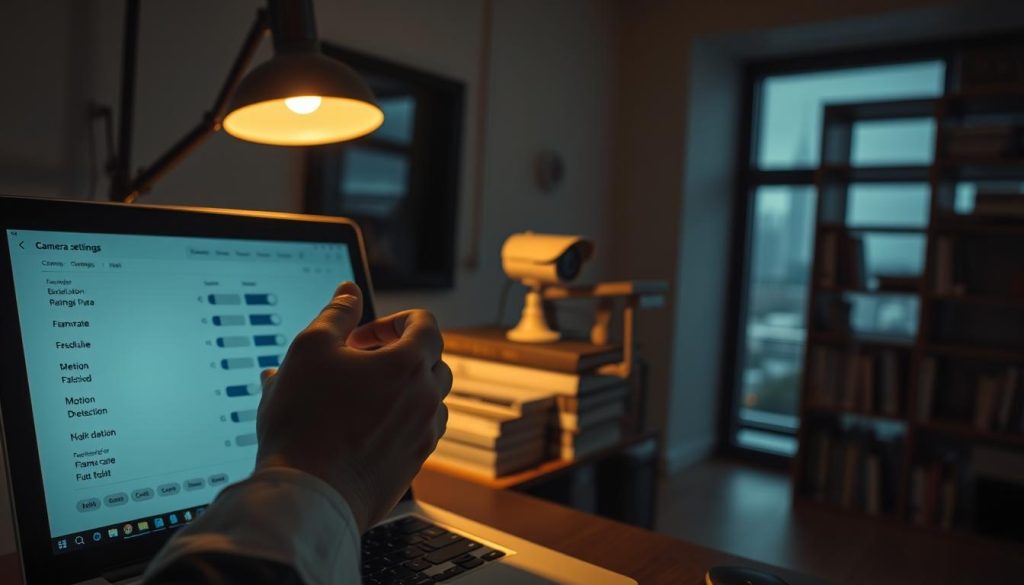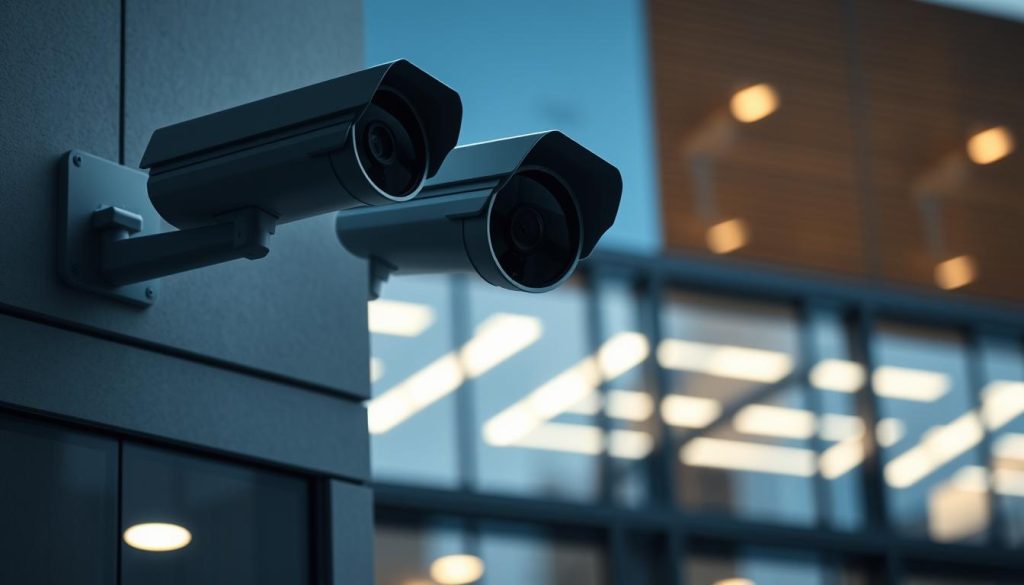Balancing home security with personal privacy is essential in Singapore. Many households rely on security systems for protection, but there are times when deactivating them becomes necessary. Whether for energy savings, legal compliance, or ethical reasons, knowing how to disable your surveillance devices properly is crucial.
Modern security cameras offer multiple shutdown methods, from physical switches to app-based controls. Brands like Viewtron provide user-friendly options, ensuring compliance with local regulations. This guide simplifies the process while emphasizing responsible usage.
Key Takeaways
- Proper camera management ensures privacy and energy efficiency
- Singaporean laws may require periodic deactivation
- Both hardware and software shutdown methods exist
- Ethical considerations accompany surveillance control
- Leading brands offer intuitive disabling features
Understanding Your Home CCTV Camera System
Modern homes in Singapore increasingly rely on advanced surveillance for protection. Whether deterring intruders or monitoring deliveries, the right cameras blend seamlessly into daily life. This section breaks down popular types and their unique features.
Types of Security Cameras and Their Features
Wireless WiFi cameras, like Arlo and Ring, simplify setup with app-based controls. These devices eliminate messy cables, ideal for renters or quick installations. In contrast, wired models provide stable connections but require professional setup.
Dome cameras offer discreet home monitoring with vandal-resistant designs. For low-light areas, infrared variants capture clear footage at night. Power-over-Ethernet (PoE) options, such as Viewtron’s systems, deliver data and power through one cable.
How CCTV Systems Function
Most surveillance systems connect to cloud storage or local Network Video Recorders (NVRs). Mobile apps let users view live feeds remotely—a staple in Singaporean smart homes. Energy use varies; WiFi models consume more power during data transmission than PoE alternatives.
“Infrared technology extends monitoring capabilities beyond daylight hours, ensuring round-the-clock security.”
For deeper insights on managing these systems, explore our guide on optimizing camera settings.
Why You Might Need to Turn Off Your CCTV Camera
Singaporean households often face situations where disabling surveillance becomes necessary. While security remains a priority, factors like energy use and legal compliance influence these decisions. Understanding when and why to deactivate your system ensures responsible usage.
Privacy and Personal Space Considerations
Family gatherings or private meetings may require temporary shutdowns to respect privacy. Singapore’s PDPA guidelines restrict recording in sensitive areas like bedrooms or bathrooms. A 2022 case involving unauthorized home monitoring led to fines under these rules.
Regular maintenance shutdowns also extend a device’s lifespan. Dust accumulation and overheating reduce performance over time. Scheduled pauses help preserve hardware integrity.
Energy Efficiency and Maintenance
A typical 4-camera setup consumes ~30 kWh monthly when running continuously. Deactivating unused units cuts costs by 15–20%, per Singapore Power data. Infrared models draw extra power at night, making timed shutdowns ideal.
“Proactive energy management in surveillance systems aligns with Singapore’s sustainability goals.”
Legal and Ethical Reasons
Businesses often disable non-critical cameras during off-hours to comply with labor laws. Retailers, for example, may pause aisle monitoring after closing. Homeowners must avoid recording public spaces to prevent PDPA violations.
Ethical concerns also arise with constant monitoring. Transparent usage policies build trust with household members or employees. Balancing privacy and security ensures compliance while maintaining protection.
How Do I Turn Off My CCTV Camera? Simple Methods
Responsible homeowners understand when temporary camera shutdowns are necessary. Physical methods offer reliability, especially during maintenance or privacy needs. Below are three proven ways to deactivate devices safely.
Unplugging the Camera Directly
Wired models require careful handling to avoid port damage. Follow these steps:
- Trace the power cable from the device to its outlet
- Grip the connector firmly, not the wire
- Pull straight out to prevent bent pins
For PoE cameras, disconnect the Ethernet cable first. This cuts both data and power in one step.
Using the On/Off Switch
Many dome cameras feature discreet switches. Hikvision models often place them near the mounting bracket. Flip the switch clockwise until you hear a click. Make sure the indicator light turns off to confirm shutdown.
Powering Down via Circuit Breaker
Hardwired systems connect directly to your electrical panel. Locate the labeled breaker—usually marked “Security” or “Surveillance.” Flip it to the “Off” position. Avoid abrupt cuts; consult manufacturer guidelines first.
“Reboot your DVR/NVR after reactivation to restore all feeds properly.”
For complex setups, learn about camera power cycles to maintain system integrity.
Deactivating CCTV Cameras Through Software
Managing camera operations through digital interfaces simplifies security adjustments. Modern software solutions allow precise control over recording schedules, motion detection, and live feeds without physical access. This method is ideal for multi-camera setups or remote management.
Accessing the Camera’s Admin Dashboard
Most brands like Dahua or Lorex use web-based dashboards. Enter the device’s IP address (e.g., 192.168.1.100) into a browser. Admin users must authenticate with unique credentials—default passwords should be changed immediately for security.
Critical settings to review before deactivation:
- Motion alerts: Disable to prevent false notifications
- Cloud sync: Pause uploads to conserve bandwidth
- User permissions: Restrict access during maintenance
Disabling Features via Manufacturer Software
Viewtron’s AI/Event menu lets users toggle specific functions. For enterprise surveillance systems, batch scripts streamline shutdowns:
# Bulk deactivation script example
for cam in camera_list:
cam.disable_recording()
Always create backup profiles before modifying settings. Outdated firmware exposes systems to risks—Singapore’s CSA advises quarterly updates. For detailed guidelines, refer to their cybersecurity portal.
Using Mobile Apps for Remote Camera Management
Smartphone applications revolutionize how homeowners manage security devices remotely. Over three-quarters of Singaporean users now prefer app controls for their convenience and real-time adjustments.
Master Arm/Disarm Functions
Viewtron’s intuitive interface sets the standard for one-touch control. Swipe left from the live view to reveal a shield icon—tapping it instantly disables all connected cameras. This feature is particularly useful when hosting guests or performing maintenance.
Geofencing technology in apps like AlfredCamera automatically turn cameras off when your phone enters a predefined safe zone. A 2023 survey showed 78% of users activated this function to prevent accidental recordings during family time.
iOS vs. Android Experiences
Both platforms offer robust controls but differ in execution. iPhone users benefit from tighter integration with HomeKit for voice commands. Android versions often include advanced scheduling options missing from iOS.
“Always enable two-factor authentication in your security app—62% of breaches occur through compromised mobile credentials.”
Common troubleshooting steps:
- Force-close and reopen the app if feeds freeze
- Check for OS compatibility before updating
- Reset location permissions if geofencing fails
For optimal performance, update your mobile app quarterly. Singapore’s Cybersecurity Agency recommends using app-specific passwords alongside biometric locks.
Security Tips When Turning Off Your Cameras
Securing your surveillance system during downtime requires strategic precautions. Temporary deactivation shouldn’t compromise your home’s protection framework. Implement these measures to maintain security while respecting privacy needs.

Preventing Unauthorized Access
Singapore’s Cybersecurity Agency recommends 12-character passwords with mixed symbols for admin accounts. Change default credentials immediately—TP-Link Tapo devices are particularly vulnerable if left unmodified.
For remote access, VPNs provide encrypted tunnels safer than open ports. Monthly permission audits help track active users in shared households. Watch for these tampering signs:
- Unexpected system offline status
- Unrecognized login attempts in audit logs
- Configuration changes during shutdown periods
Maintaining System Integrity
Audit logs document all deactivation events for compliance checks. Viewtron systems timestamp each shutdown with user identification. This creates accountability in multi-user environments.
“Default credentials account for 31% of Singaporean home security breaches—always customize them during initial setup.”
When reactivating surveillance cameras, verify firmware updates first. Outdated software exposes systems to exploits. Schedule maintenance windows during low-risk periods to minimize vulnerability gaps.
Expert Recommendations for CCTV Security
Maximizing your home security requires strategic planning. SECOM’s 2023 report highlights pairing cameras with motion-activated lights for complete coverage in HDB flats. This combination deters intruders more effectively than standalone devices.
Professional installation ensures optimal performance. NUS research shows well-configured systems reduce break-ins by 67% in Singaporean neighborhoods. High-risk areas like jewelry stores benefit most from expert setups.
Regular maintenance preserves functionality. Quarterly checks for corrosion or loose connections prevent unexpected failures. Integrated systems with smart locks enhance protection beyond basic surveillance.
“Proper placement and integration create layered defense for both home and business environments.”
Follow these steps for reliable security: schedule professional inspections, update firmware regularly, and combine multiple deterrent methods. This approach balances visibility with actual protection.

